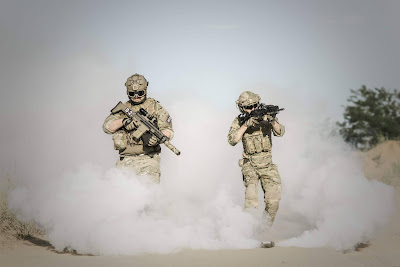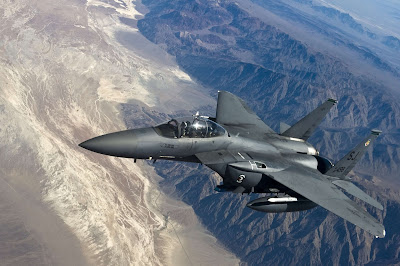Afghanistan’s future remains as uncertain as ever after decades of invasion, civil war, and the so-called War on Terror.
 |
| [US troops leaving Afghanistan] |
The United States will leave Afghanistan in late 2021, but there are rising fears about what will happen when they go.
The Taliban were deposed by a US-led invasion in 2001, and many observers believe the terrorist organization is again in a position to reclaim control of Afghanistan. But who are the Taliban and where did they originate?
Understanding the origins of the organization necessitates a review of Afghan history spanning more than 40 years. In 1979, the Soviet Union invaded Afghanistan. Millions of Afghans fled to Pakistan and Iran as the US funded and equipped Afghan mujahidin liberation fighters. Soon after, the CIA (Central Intelligence Agency) launched Operation Cyclone, a clandestine operation to fund and arm Afghan independence fighters in what it saw as an anti-communist conflict. Many Muslims from all around the world volunteered to fight the Soviets as well. Osama Bin Laden, a young man, was one among them.
President Ronald Reagan met with mujahidin leaders at the White House in 1983. In the struggle against communism and the Soviet Union, the US considered them allies. Even popular culture at the time mirrored this. Sylvester Stallone battled alongside Afghan tribesmen against Soviets in the film “Rambo 3.” The video really finished with a salute to Afghanistan’s “brave people.”
After ten years of occupation, the superior weaponry given by the US to the mujahidin began to take its toll on Soviet forces, and the Kremlin decided to withdraw soldiers from Afghanistan. “This progress would not have been achieved if it hadn’t been for the courageous battle of the Afghan people to free their nation from foreign occupation,” Ronald Reagan stated after that decision. We are ecstatic to have played a role in the Afghan people’s victory, and they can depend on our continuing support.
Following the withdrawal, Mohammad Najibullah, the former Soviet-backed president, resigned and was placed under house arrest at a UN facility. The Mujahidin gained control of Kabul, and the Peshawar Accord, which established the new Islamic State of Afghanistan, was signed by the majority of freedom fighting organizations.
The Taliban appeared in Southern Kandahar two years later. They took control of the region and implemented a strict interpretation of Islamic law. Mullah Muhammad Omar and his pupils created the organization. Now that communism had crumbled, Omar’s aim was to create Islamic law. In addition, the Taliban stated that they intended to rid the nation of territorial warlords and corruption. Up to 15,000 pupils from Pakistani religious institutions, the most of whom were Afghan refugees, had joined the Taliban in just a few months.
By 1996, mujahidin leaders’ cooperation had broken down, culminating in four years of warfare amongst roles. The conflict, which killed almost 50,000 civilians, left Kabul in ruins. After capturing the majority of the nation with minimal opposition, the Taliban seized Kabul in September of that year. Former President Najibullah and his brother were assassinated.
The Taliban implemented their own form of Islamic law after seizing power, prohibiting girls from attending school and denying women the opportunity to work. Public executions and legal penalties were carried out. The new Taliban administration was only recognized by Pakistan, Saudi Arabia, and the United Arab Emirates.
Following the 9/11 attacks, the US gave Mullah Omar an ultimatum. They thought that one of the alleged attack planners was Osama Bin Laden, who was protected by the Taliban, and asked that he be handed up to the US, but Omar refused.
The US-led invasion of Afghanistan came twenty years after it began backing the political forces that gave birth to the Taliban. The Taliban had fled to Kandahar region within a month of the US-led coalition army taking Kabul alongside its new partners, the Northern Alliance.
The Northern Alliance and other mujahidin organizations who governed Afghanistan in the 1990s were given control of the country by the Bonn Agreement, which was signed on December 5, 2001. Afghanistan’s interim president, Hamid Karzai, was chosen. Mullah Omar fled Kandahar two days after the Bonn Agreement (December 7, 2001) was signed, signaling the end of the Taliban rule.
As the Pentagon publicly confirmed the major combat operations in Afghanistan were over on May 1, 2003, US President George W. Bush declared ‘Mission Accomplished.’ In national general elections, Karzai was elected president for the first of two consecutive terms.
However, by 2006, the United States was embroiled in yet another expensive invasion: Iraq. The Taliban took advantage of the chance to launch a revival, notably in the south. While US and NATO combat activities in Afghanistan were formally concluded in 2014, President Barack Obama continues to authorize US forces to conduct operations against Taliban and Al Qaeda targets in the country. The Taliban increased its attacks on Afghan and US soldiers during the following three years (2015-2018). They were able to retake about 40% of Afghanistan. In September 2020, peace discussions between the Taliban and the Afghan government began in Qatar, but they failed.
In March 2021, Russia attempted to hold its own peace conference between the two groups, but it was also unsuccessful.
US President Joe Biden stated on April 14, 2021 that soldiers will be removed from Afghanistan by September 11, 2021. Violence in Kabul has increased since Biden’s statement. Attacks can happen at any moment and aren’t always claimed by a violent group or party. Journalists, judges, and high-profile women are among the victims of the assault. The Taliban have continued to expand their area. Government officials have even urged citizens to join the fight against the Taliban.
The United States evacuated from Bagram Air Base in the middle of the night on July 6, 2021. A jail on the site is reported to contain up to 5,000 Taliban detainees.
What may Afghanistan look like in post-US era?
The United States’ longest war is about to come to an end, yet the adversary it has been battling for two decades is becoming stronger and more legitimate as US forces prepare to depart.
Under the weight of an overwhelming Taliban onslaught, Afghan security troops are collapsing. In ten regions throughout the country, local militias have taken up weapons against radicals, raising the threat of a full-fledged civil war.
The Afghan Foreign Minister warned that the US exit will result in not just internal strife, but also regional conflict. Terrorist organizations and criminal gangs would be allowed to operate as well. President Joe Biden of the United States has vowed continuous support for the Afghan government, stating that it would not fall and that rights and freedoms will be preserved. “US assistance for the people of Afghanistan will continue,” Biden declares. We will continue to provide civilian and humanitarian assistance, as well as advocate for the rights of women and girls.
However, as NATO forces prepare to depart the nation, the Taliban have stepped in to take advantage of the authority vacuum. According to the organization, it controls over 85% of the nation, including border crossings with Iran, Turkmenistan, and, more lately, Pakistan. According to a US intelligence study, after US and other international forces depart, the Afghan government might fall in six months.
Despite the ongoing violence the Taliban seems to be enjoying some form of international legitimacy. The peace deal brokered by the Trump administration also helped change the Taliban’s image of a terrorist group that couldn’t be negotiated with and aside from the Doha Peace Talks Taliban negotiators have visited Russia, Iran and Pakistan.
The Taliban vowed to protect foreign diplomats and allow non-governmental organizations to operate in Afghanistan in an effort to soften their violent image. The largely Pushto-dominated committee also stated that minorities’ rights will be protected. Shahabuddin Delawar, the head of Afghan Contact Group-Political Office said, ” We are not upto taking power. We want all Afghans to play their roles in the government with us according their ability and knowledge.”
Many analysts, though, are concerned about the new Taliban’s softening. They claim the organization is on a charm offensive, with one side acting polite and nice for the cameras vs the rural Taliban, who believe in the same severe backward type of rule as in the 1990s.
Many of the Taliban’s battle-hardened members still have a militaristic attitude, and they fear that if they gain power, Afghanistan would be ruled by a more hardline party.
Many Afghan women are concerned about the privileges they obtained under past Afghan regimes. It has a mental impact on women that is disproportionate, and it has a detrimental influence on women’s independence and access to basic human rights across Afghanistan.
For the time being, it is apparent that the Taliban is making tremendous progress. While Afghan security forces still control the majority of the country’s metropolitan areas, this might alter shortly. What would happen if the Taliban took control of certain cities?
The US has stated that it will continue to help the Afghan government, but its track record contradicts this. The Taliban, on the other hand, is making a lot of promises. Its history, on the other hand, demonstrates the contrary. Both sides appear to be guilty of one thing: their statements do not appear to match their deeds.
The looming US exit has only increased Afghans’ sense of fear. Afghanistan face an uncertain future after decades of invasion, civil war, and the so-called War on Terror.
[This article may resemble TRT World’s documentaries]









+ There are no comments
Add yours